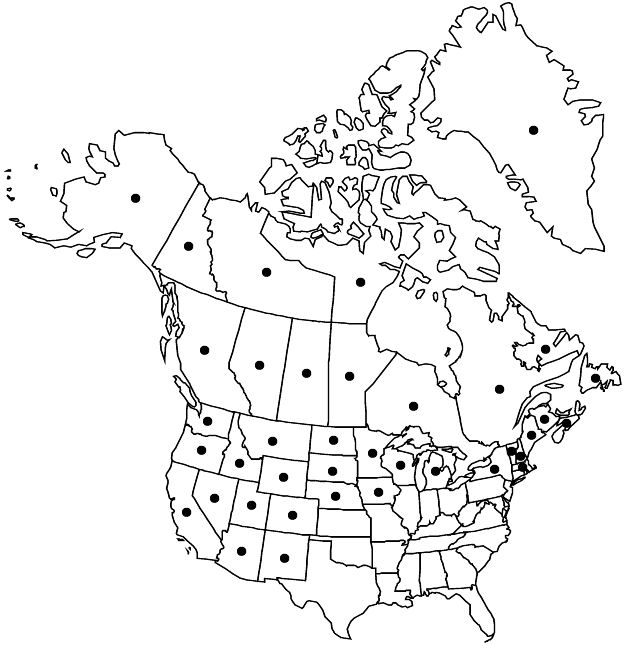Viola adunca
Cycl. 37: Viola no. 63.
Plants perennial, caulescent, not stoloniferous, 1.8–30 (–35) cm. Stems 1–5, erect, ascending, or decumbent, sometimes later reclining to nearly prostrate, glabrous or puberulent, on caudex from subligneous rhizome. Leaves basal and cauline; basal: 1–4; stipules linear to linearlanceolate, margins entire or laciniate with gland-tipped projections, apex acute to acuminate; petiole 0.5–13.5 cm, glabrous or puberulent; blade usually ovate or ovate-deltate to ovate-orbiculate, sometimes ± reniform or oblong, 0.5–6.9 × 0.4–5 cm, base cordate, subcordate, truncate, or attenuate, usually decurrent on petiole, margins crenate to crenulate or entire, ciliate or eciliate, apex acute to obtuse, surfaces glabrous or sparsely to densely puberulent; cauline similar to basal except: stipule margins lacerate to laciniate; petiole 0.5–6.5 cm; blade 0.6–5.5 × 0.4–4.7 cm. Peduncles 1.7–13.8 cm, glabrous or puberulent. Flowers: sepals lanceolate, margins ciliate or eciliate, auricles not enlarged in fruit, 0.5–2 mm; petals light to deep to lavender-violet on both surfaces, rarely white, lower 3 usually white basally, dark violet-veined, lateral 2 (and sometimes upper 2) bearded, lowest 7–17 (–23) mm, spur purple to violet or white, elongated, 5–7 mm, tip straight or pointed, curved up or lateral; style head sparsely to densely bearded, sometimes beardless; cleistogamous flowers axillary. Capsules short-ovoid, 6–11 mm, glabrous. Seeds dark-brown to olive-black, 1.5–2 mm.
Distribution

Alta., B.C., Man., N.B., N.S., N.W.T., Nunavut, Ont., Que., Sask., Yukon, Alaska, Ariz., Calif., Colo., Idaho, Iowa, Maine, Mass., Mich., Minn., Mont., N.Dak., N.H., N.Mex., N.Y., Nebr., Nev., Oreg., S.Dak., Utah, Vt., Wash., Wis., Wyo.
Discussion
Varieties 2 (2 in the flora).
Viola adunca is polymorphic with over 50 named taxa. G. D. McPherson and J. G. Packer (1974) reported that diploid, triploid, and tetraploid races of V. adunca occur in Canada and northwestern United States. They found that diploid and tetraploid chromosome races can be distinguished morphologically based on style beards and on the size of guard cells and pollen grains and recommended taxonomic recognition of both races. In diploid races, the style projections are more or less cylindrical and about one-sixth the width of the style; in tetraploid races they are short-conical or globular, and about one-tenth or less than the width of the style beard.
Selected References
None.
Key
| 1 | Plants (4–)4.5–30(–35) cm; basal blades 1.3–6.9 × 1.2–5 cm; peduncles 3–13.8 cm; 0–3600 m; widespread in North America. | Viola adunca var. adunca |
| 1 | Plants 1.8–4.5(–6.5) cm; basal blades 0.5–1.7 × 0.4–1.4 cm; peduncles 1.7–5 cm; 2500–3800 m; restricted to Rocky Mountains (Colorado, Montana, Wyoming, British Columbia). | Viola adunca var. bellidifolia |
"thick" is not a number. "narrow" is not a number.